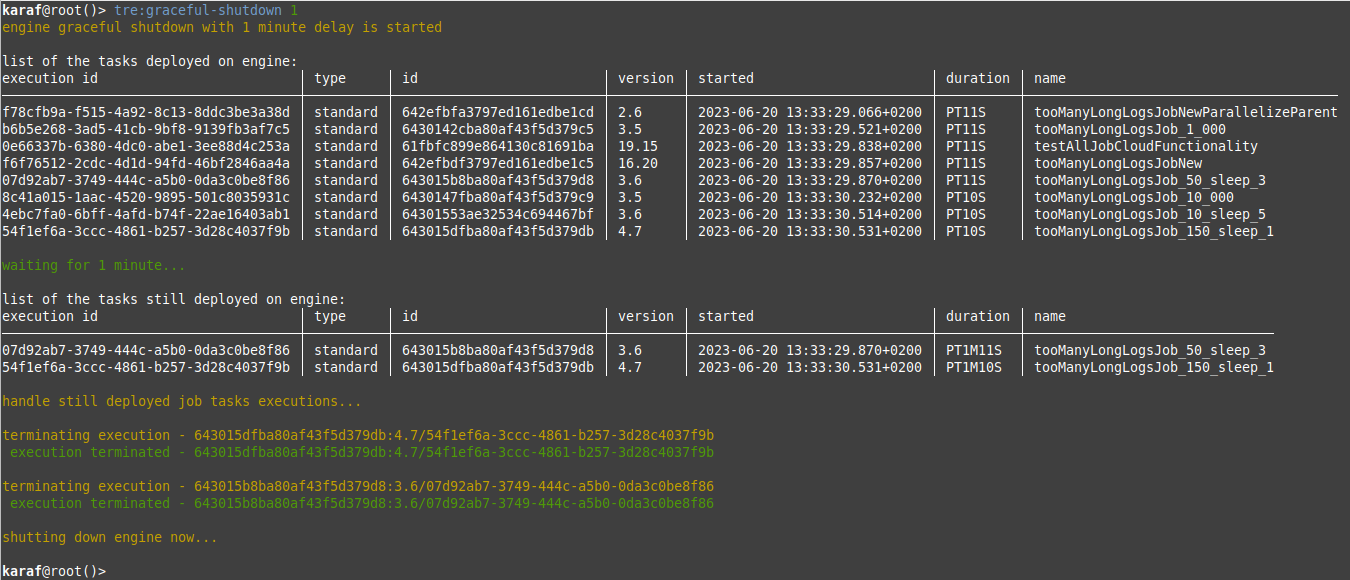Running the graceful shutdown process of Remote Engine
Before you begin
- Your Remote Engine version must be v2.12.14 onwards.
Procedure
tre:graceful-shutdown <shutdown_grace_period_in_minutes>tre:graceful-shutdown 1Example

Results
When the command is launched, your engine enters the grace period (the shutdown delay period) where it rejects any new data integration tasks and simultaneously, scans all active task runs, that is to say, all running executions. As the grace period reaches its end, the engine proceeds to appropriately terminate the running executions of all the data integration tasks and ensure that the Terminated status is correctly labeled.
The graceful shutdown process does not affect the data service tasks or the Route tasks, which include microservices and OSGi services. The microservices continue to run, with no impact from the grace period, until they are terminated along with the engine shutdown, and they are automatically resumed upon the engine restart. The OSGi services, which are deployed on Talend Runtime, keep running separately on that server.
- tre:info: obtain a list of task types assigned to your engine.
- tre:execution-list: list all task runs on your engine.
- tre:execution-info: check details of a specific run.
- tre:execution-kill: kill a task run without restarting the engine.
Did this page help you?
If you find any issues with this page or its content – a typo, a missing step, or a technical error – let us know how we can improve!
